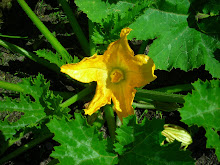The dreaded Leek Moth, Allium leaf miner (both attack leeks mainly) and the Onion Fly (attacks everything oniony) not sure which but they've been in my garden and most likely lots of others. The damage appears very similar, holes in the leaves and rotting once the fungi have got in through the holes.
The Leek Moth has two generations during the summer with larvae damaging the plants the first generation in May-June and the second generation in August-October. The second generation is the more numerous and damaging. Leek moth caterpillars are creamy-white with brown heads and small legs.
The Onion Fly The adults appear like houseflies and lay their eggs on old leaves or on soil. One onion fly maggot or larvae often destroys three or four onions before it becomes full grown and pupates. A second generation of onion flies appears in late July or August. A creamy white maggot up to 8 mm long with a blunt rear end tapering towards a more pointed head, a classic maggot.
The Allium leaf miner in December 2003 the first UK outbreak was discovered on leeks in Wolverhampton, this one is new to our shores. 3 to 4mm long it has two generations a year: First generation female flies lay eggs on the stems or base of leaves during March to April The second generation repeats the process in October to November. Larvae of the leaf-mining fly are white, headless maggots with no legs
Sue writes...
At our end of the gardens there are four of us (probably more) who have had leek devastation caused by the dreaded Onion Fly. This has prompted me to have a dig around the www, and paste here some of my findings.
In short, the main points seem to be (1) once attacked you can’t do anything, (2) all plants must be burned, (3) turn the soil over to encourage birds to forage for grubs, (4) the past prevention has been chemicals, and (5) the current preventions are: a. protect from fly with fleece, b. plant marigolds or something with a strong smell to discourage the fly, and c. nematodes, expensive but presumably works if you plan in time and keep at it.
thanks Sue
for more info go to the Royal Horticultural Society site
